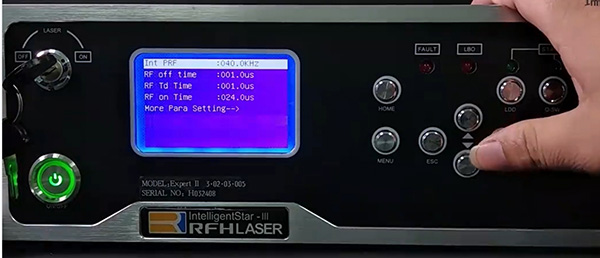Latest Blog
How can the power or intensity of a UV laser beam be controlled?
Oct 12 , 2023Controlling the power or intensity of a UV (ultraviolet) laser beam can be achieved using a combination of optical and electronic methods. Here are some common techniques to regulate the power or intensity of a UV laser beam:
The power output of many lasers, including diode lasers, is directly related to the drive current. By adjusting the current supplied to the laser, you can adjust the output power. Precise current sources can be used for this purpose.
Many lasers can be operated in a pulsed mode, where the laser is turned on and off at a high frequency. By varying the duty cycle (ratio of on-time to off-time), you can effectively adjust the average power of the laser.
These are optical filters that attenuate or reduce the power of light across a broad spectrum. By placing one or more neutral density filters in the beam path, you can reduce the power of the UV laser.
These are devices that allow for continuously adjustable attenuation. They work using various principles, like moving wedge filters, liquid crystal modulation, or rotating polarizers.
Beam splitters divide a beam of light into two or more separate beams. By using a beam splitter, you can direct a fraction of the original beam to a secondary path, reducing the intensity of the primary beam.
Laser light is polarized. By placing a polarizer in the beam path and rotating it, you can attenuate the beam. This method works based on the Malus's law, which relates the intensity of transmitted light to the angle between the light's polarization direction and the polarizer's axis.
In certain lasers, like Nd:YAG, a technique called Q-switching is used. It involves the use of an internal modulator (the Q-switch) that can control the duration and timing of the laser pulse. By changing the pulse duration and frequency, one can control the intensity and energy of the laser output.
Devices like acousto-optic or electro-optic modulators can be placed in the beam path to control the intensity of the laser beam. They modulate the beam based on external signals and can be used for fast and precise control.
Some advanced laser systems incorporate feedback loops. A small portion of the laser beam is sampled using a beam splitter and directed to a detector. The detector measures the power, and the feedback loop adjusts the laser's input parameters (like current) to maintain a constant output power.
Press the down arrow key to select “QS Setting” menu.

Press down arrow key to select “More Para Setting→” . Press “ENT” key to enter power parameter setting page. Press down arrow key to select last item of “More Para Setting→”menu. Press “ENT” key to enter the page of more parameters settings. Press down arrow key to select the third item “QS Low Power”menu.

Rotate the knob to change the value of “QS Low Power”. The range of the adjustment is 0-5V. The higher the value the darker the light.
